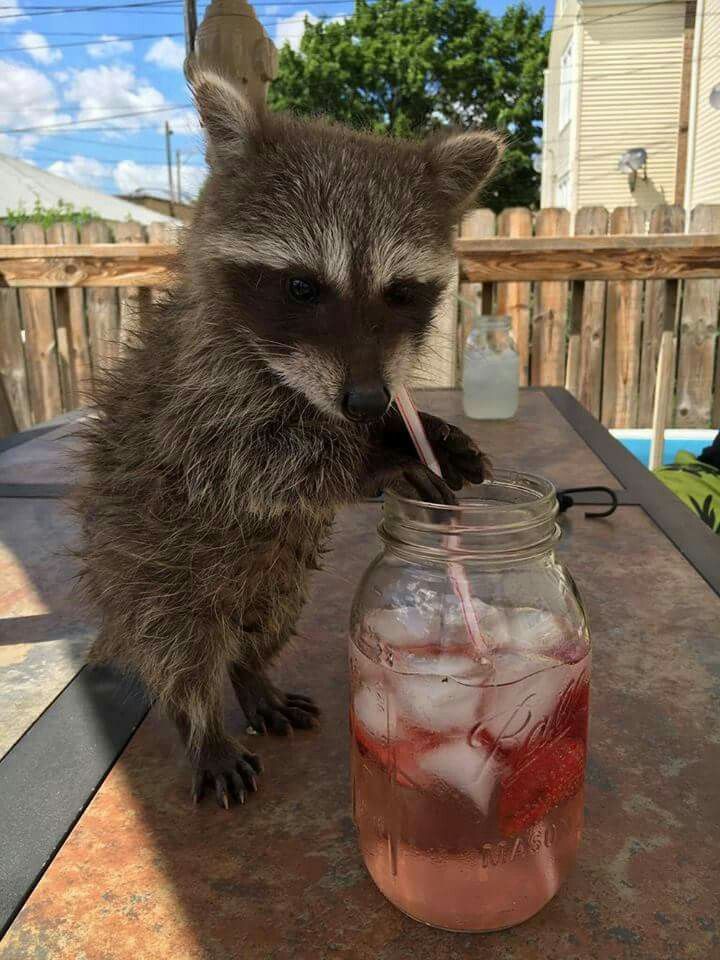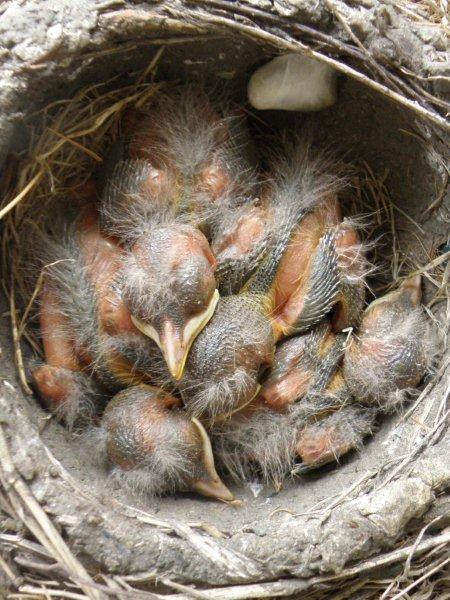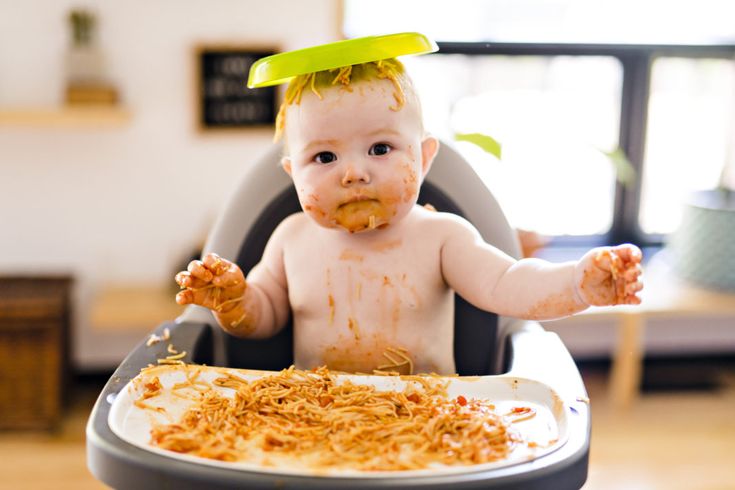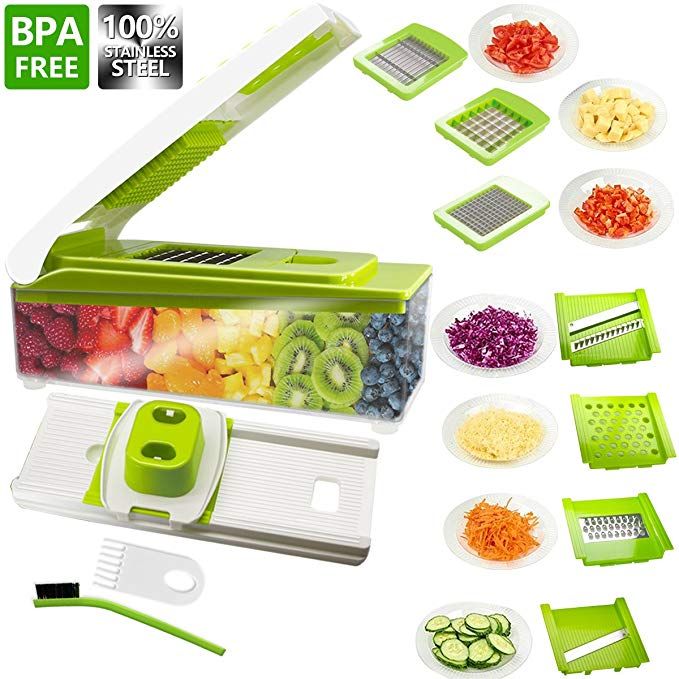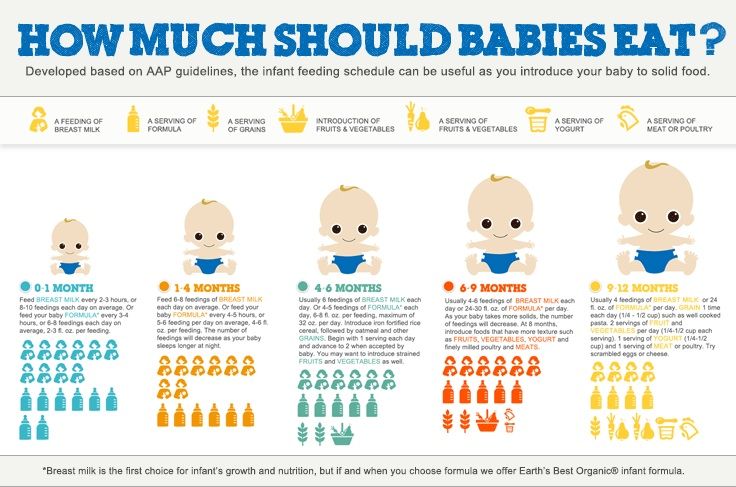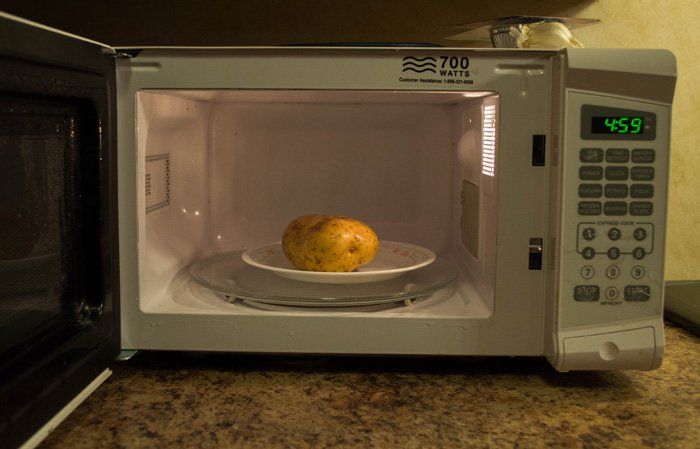How to bottle feed a baby raccoon
Should I ever feed a baby raccoon?
You’re going through a stroll in the woods and you find a baby raccoon alone at daytime, it could be for a ton of reasons; as the mother sleeps during the day, usually the litter strays from the mother because raccoons become nocturnal after a year and the mother will usually pick up the baby after more or less than eight hours. But, it should be looked after as it is a baby and will be susceptible to attacks from larger animals. Please make sure to wear gloves when coming in contact with the baby. Make sure the baby isn’t cold, covered with fleas, attacked by a wild animal or a cat or a dog, injured, breathing with difficulty, holding its head straight, and bleeding. If you say yes to any of these things, make sure you take it to a wildlife rehabilitation center.
The very first thing to do, before you try and feed them, is to make sure they are heated as baby raccoons cannot make their own body heat if they are younger than 5 weeks. You will need a heating pad set on low, a towel which you will fold and put atop the heating pad, then on top of that you will put a box in which you can put inside any type of soft cloth and place the babies there, for gradual heat distribution. Never, ever feed a baby that is cold, because it will result in death. Make sure they are at 101-103°F before attempting to feed them. Baby raccoons can also be dehydrated, mix 1 teaspoon of sugar in a pint of distilled or boiled water then add 1/3 teaspoons of salt. There are also other remedies, but this is the easiest.
Before feeding, make sure the baby is calm, hydrated and if not, is taking the solution in a good manner, start it on kitten replacement milk, it is in a power so it will need filtered water and not straight from the tap. The babies should be fed properly or otherwise they might die painfully. Do NOT feed them honey, milk and raw eggs. The kitten formula should be heated at their body temperature before feeding, if they can’t suck through the animal nursing bottle, use a syringe through which the baby will lick the formula form the tip.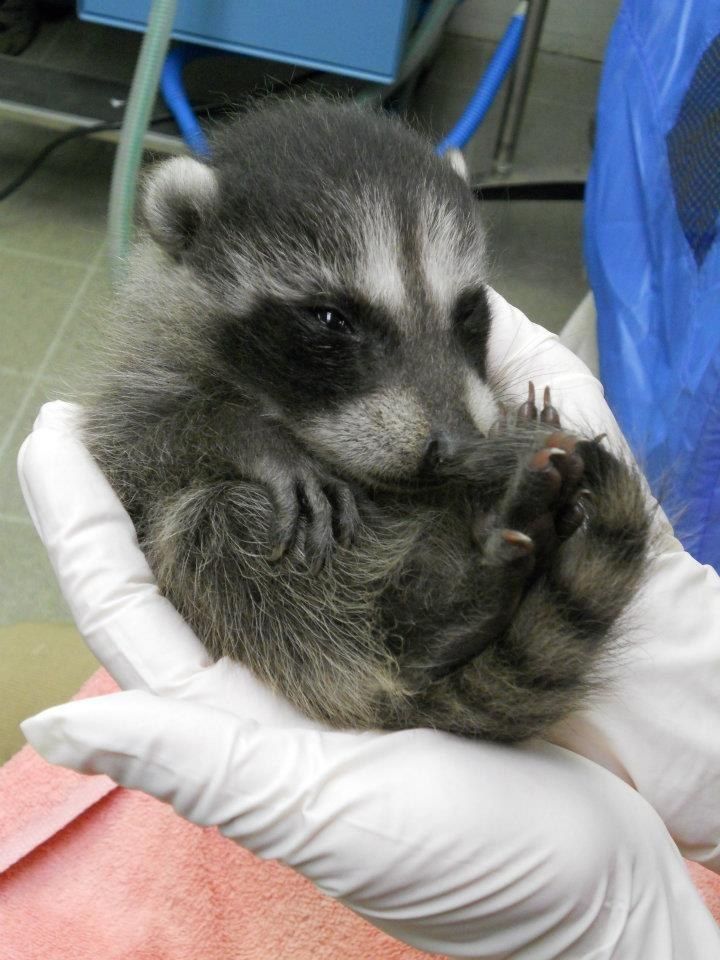 Feed it five times in a day for the first month.
Feed it five times in a day for the first month.
After the baby grows out of the syringe, you will have to train it for a bottle. Place it on its stomach, put your hand over the muzzle and rub the back for it to start sucking. Don’t feed it too much, as they’ll start to sneeze and it can result in death after too many times. Put it on its back and let it stop sneezing, wipe the formula from the sneeze after every sneeze. It is best to stop feeding before the tummy is full and it stops sucking and searching for more. Wash the face with a damp cloth after feeding.
Go back to the How to get rid of raccoons home page.
Need raccoon removal in your hometown? We service over 500 USA locations! Click here to hire us in your town and check prices - updated for year 2020.
Last night by carefully pulling out the wood stove fireplace and peering behind it we discovered that there were at least 2 adolescent raccoons. In reading the article it says the mother can climb down the chimney? Since there is no cap on the chimney what is the best way to retrieve the adolescent raccoons from the bottom and catch the mother somehow? Should we put a cap on the chimney now or after trying a trap at the top? Any info is greatly appreciated. Dave
Dave
My response: As stated on my website, grab the babies by hand with thick gloves, and use them as bait to trap the mother. If this is too hard, hire a trapper.
Thank you very much for replying back. Grabbing the 4 adolescent raccoons by hand is what my brother in law ended up doing the next day. I wouldn't want to so I'm glad they did it! They put a cap on the chimney so all should be safe and sound. Thanks again, Dave
Select Your Animal
RaccoonsRaccoon Control Education and Services
SquirrelsSquirrel Control Education and Services
OpossumOpossum Control Education and Services
SkunksSkunk Control Education and Services
RatsRat Control Education and Services
MiceMouse Control Education and Services
MolesMole Control Education and Services
GroundhogGroundhog Control Education and Services
ArmadillosArmadillo Control Education and Services
BeaverBeaver Control Education and Services
FoxFox Control Education and Services
CoyotesCoyote Control Education and Services
BirdsBird Control Education and Services
BatsBat Control Education and Services
SnakesSnake Control Education and Services
DeadDead Animal Control Education and Services
The Gable's Raccoon Rehab Info & Tips
The Gable's Raccoon Rehab Info & Tips| Main/Home | What's New | Search Site | Raccoon Tales |
| Pictures & Graphics | Raccoon Facts & Info | Raccoon Problems | Diseases & Parasites |
| Raccoon Fun Pages | Causes & Links | Awards & Rings | Contact & Feedback |
| |
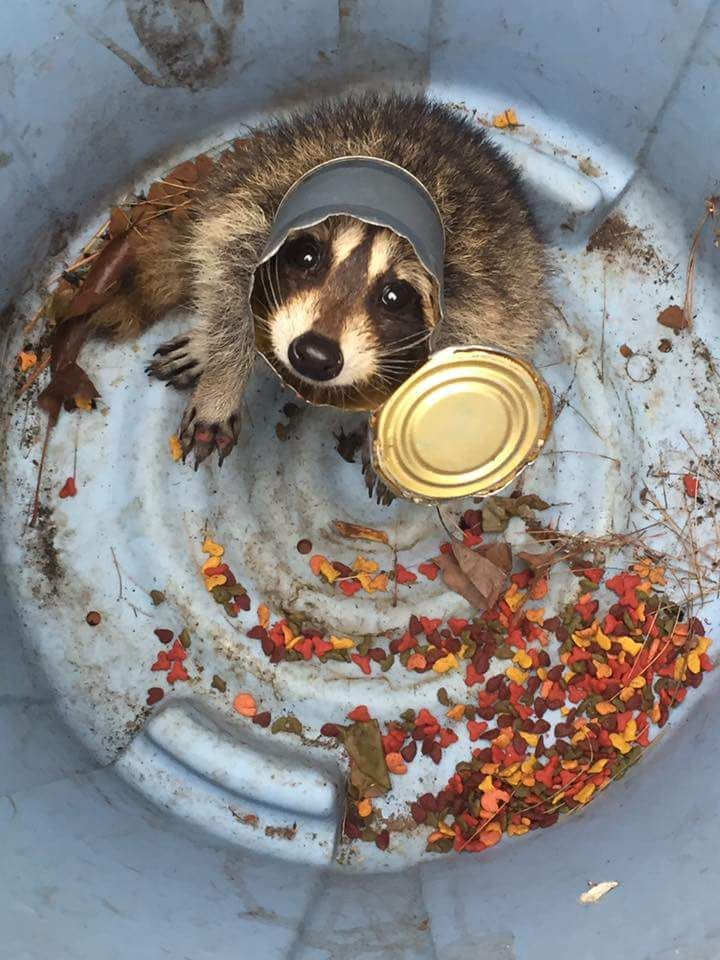 Everyone reading this should first be familiar with rabies, the raccoon rabies varient, and the precautions needed to prevent exposure to a possibly infected raccoon. If you have not done so yet, you are urged to read the information contained in my RABIES page. Everyone reading this should first be familiar with rabies, the raccoon rabies varient, and the precautions needed to prevent exposure to a possibly infected raccoon. If you have not done so yet, you are urged to read the information contained in my RABIES page. |
- Age determination
- Feeding baby raccoons
- Feeding juvenile raccoons
- Potty training raccoons/raccoon roundworm
- Housing young raccoons
- Housing juvenile raccoons
- Dealing with imprinting and other problems
- Preparing a raccoon for release
Age Determination
Raccoon kits or cubs (whichever term you prefer, since it seems nobody can agree on one) are born very lightly furred, with a faint mask. They typically weigh three to five ounces and 4-6 inches long with 2-2 1/4" tail. Pigmented tail rings will either be present or will appear at about one week of age. Their eyes are closed and so are their ears (ear are pressed tightly forward to the head. ) The head seems large in comparison to the rest of the body. When hungry, cold, or not in contact with another warm body, the babies will start chattering, whine or twitter like birds. They can crawl in a spider-like fashion with all four legs in extension, but cannot climb or stand and support their full weight. The eyes open at about two to three weeks, the ears shortly thereafter. They now average 7-10" long. They will be VERY vocal at this age. They will churr, growl, hiss, and give an alarm snort. By 4 weeks they are about 12-13" long. When five to six weeks old, most can walk, run, and climb very well. Seven-week-old babies will engage in active (and sometimes rough) fighting characterized by growling, squealing, biting, wrestling, and imitating adult defense postures. They remain in their birth den until they are about seven or eight weeks old, at which point their mother moves them to a series of alternate dens. After about eight to nine weeks of age they begin eating solid foods in the wild and by 10 weeks they are traveling with their mother.
) The head seems large in comparison to the rest of the body. When hungry, cold, or not in contact with another warm body, the babies will start chattering, whine or twitter like birds. They can crawl in a spider-like fashion with all four legs in extension, but cannot climb or stand and support their full weight. The eyes open at about two to three weeks, the ears shortly thereafter. They now average 7-10" long. They will be VERY vocal at this age. They will churr, growl, hiss, and give an alarm snort. By 4 weeks they are about 12-13" long. When five to six weeks old, most can walk, run, and climb very well. Seven-week-old babies will engage in active (and sometimes rough) fighting characterized by growling, squealing, biting, wrestling, and imitating adult defense postures. They remain in their birth den until they are about seven or eight weeks old, at which point their mother moves them to a series of alternate dens. After about eight to nine weeks of age they begin eating solid foods in the wild and by 10 weeks they are traveling with their mother.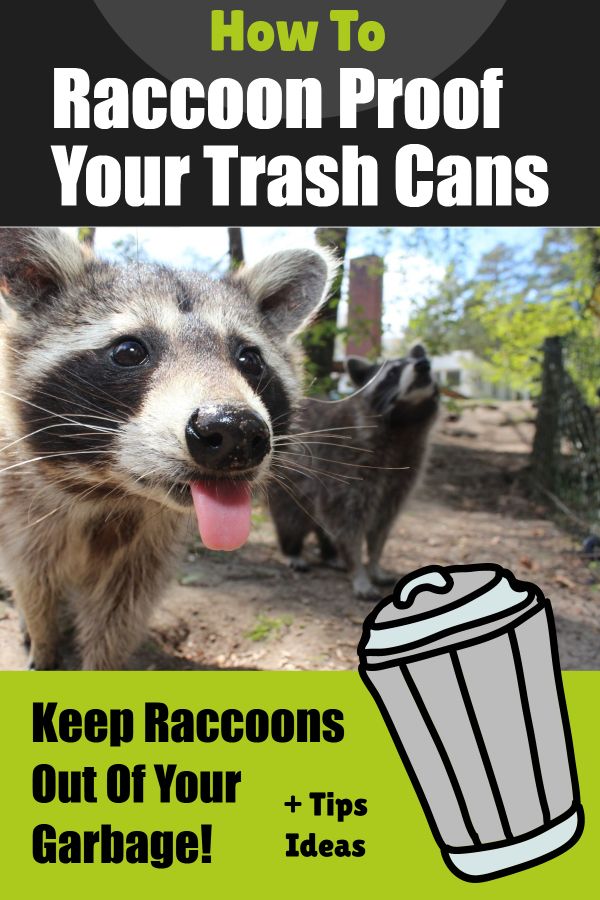 By four months old, they will be completely weaned and somewhat independent. Raccoon mothers with babies enjoy a privileged position in the raccoon hierarchy for as long as the babies remain with the mother. Other raccoons will defer to a female with babies in feeding situations. For rehabbers, the appropriate age for releasing hand-raised baby raccoons back into the wild is 16 to 24 weeks. This of course would be subject to the season of the year and the readiness of the animal. I prefer to wait until they are at least 20-24 weeks. At this age they are still young enough that there instincts take over and they become truly wild following their release.
By four months old, they will be completely weaned and somewhat independent. Raccoon mothers with babies enjoy a privileged position in the raccoon hierarchy for as long as the babies remain with the mother. Other raccoons will defer to a female with babies in feeding situations. For rehabbers, the appropriate age for releasing hand-raised baby raccoons back into the wild is 16 to 24 weeks. This of course would be subject to the season of the year and the readiness of the animal. I prefer to wait until they are at least 20-24 weeks. At this age they are still young enough that there instincts take over and they become truly wild following their release.
[top]
Feeding baby raccoons
DON'T GIVE THEM MILK! They should be on kitten milk replacement formula. (You can substitute baby formula or even condensed milk in an emergency only situtation but NEVER regular milk!) If they are dehydrated when you get them, feed a rehydrating formula for the first 2-3 feedings and ease slowly into regular formula.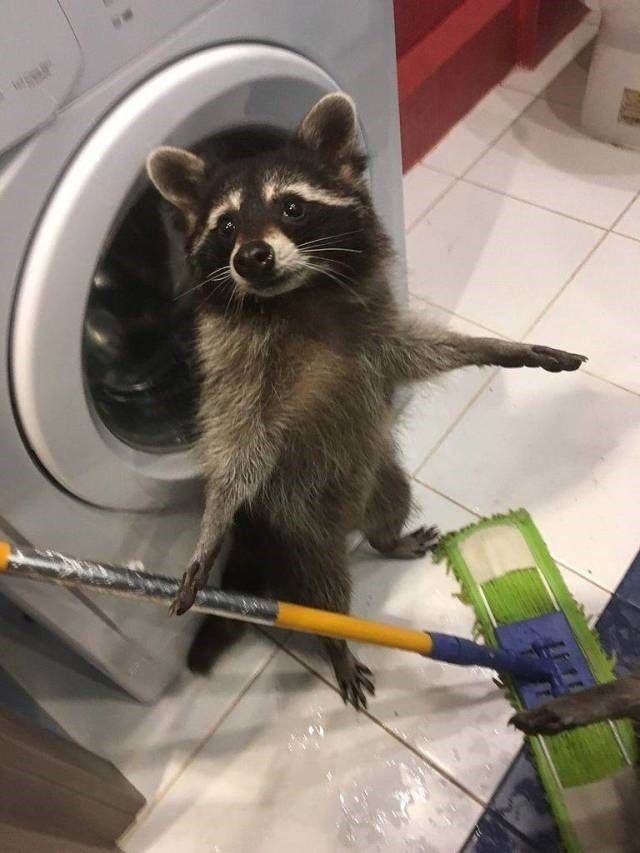 Formula should be heated to body temperature before feeding (100-102F). You should be feeding them 5 times a day (that includes in the middle of the night) for the first four weeks. Use an eyedropper (a bulb syringe really - you can pick it up at any vet's office or some pet stores) if they don't take to the bottle yet (animal nurser bottle, 4 ounce size, available at pet shop or a baby bottle with preemie nipple). Don't overfeed! Raccoons will overeat when nursing. If their little belly feels full, stop. It is better to feed more often than to overfeed.
Formula should be heated to body temperature before feeding (100-102F). You should be feeding them 5 times a day (that includes in the middle of the night) for the first four weeks. Use an eyedropper (a bulb syringe really - you can pick it up at any vet's office or some pet stores) if they don't take to the bottle yet (animal nurser bottle, 4 ounce size, available at pet shop or a baby bottle with preemie nipple). Don't overfeed! Raccoons will overeat when nursing. If their little belly feels full, stop. It is better to feed more often than to overfeed.
You should always feed them belly down, not on their backs. You may find that rubbing or scratching their necks helps to stimulate them to nurse. You may also have to burp them - just like you would a baby. You may have to manually stimulate them to eliminate for another few weeks. Use a cotton ball dipped in warm water, gently swap genital area from front to back.
At 4 weeks (about a week after their eyes open), they should probably be up to taking at least 2 ounces or more from a bottle - start adding some baby rice cereal into the formula, cut it down to 4 times a day.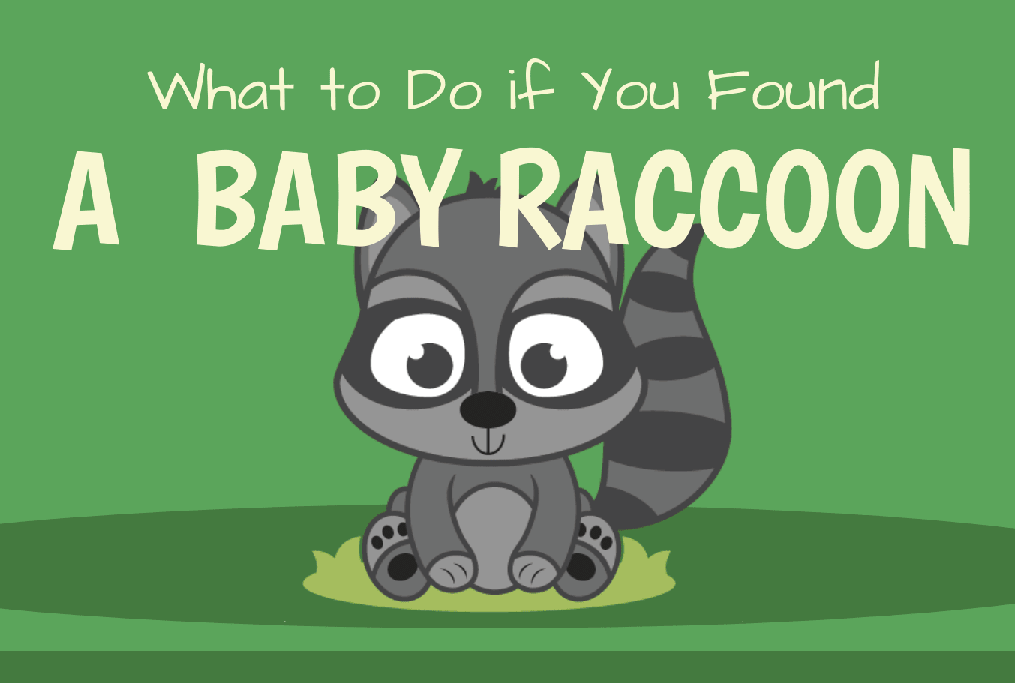 I like to use iron fortified baby rice cereal with banannas. At six weeks I usually start adding a small amount of canned kitten food in with the formula.
I like to use iron fortified baby rice cereal with banannas. At six weeks I usually start adding a small amount of canned kitten food in with the formula.
Baby raccoons will nurse for approximately 8 weeks and you can wean them off the bottle onto a gruel of formula, baby cereal, and canned kitten food (I prefer Little Friskies Turkey for kittens). Gradually work them up to dry dog kibble as the main staple, along with a variety of fruits, vegetables and any of nature's yummies and yuckies (minnows, etc.).
[top]
Feeding juvenile raccoons
Once they are fully weaned (approximately 8-10 weeks), you should gradually work up from a soft gruel to a high quality dry dog kibble as the main staple. To this, you can add whatever meals, snacks and treats you wish. What one raccoons loves another may turn his nose up at. Carrot lovers are rare. Most will devour uncooked corn on the cob (and have a ball shucking it themselves) but this is not advisable if you will be releasing them in an area near corn farms.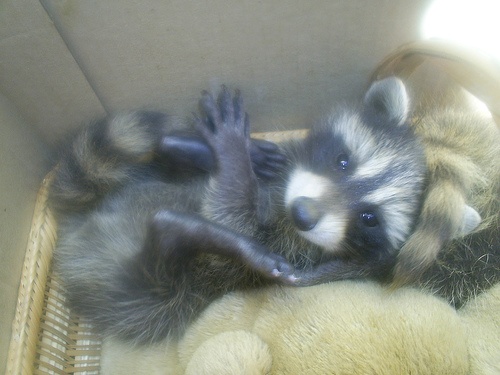 Same goes for watermelons. All my raccoons loved dog biscuits and grapes and they can be very useful as bribes. (You may have to initially cut the grapes in half until the raccoons discover what they are.) Raccoons have a sweet-tooth and, while I have never given mine any, I understand they love marshmallows. Use any sweets sparingly. I sometimes give them dry cat food for a change. I buy minnows and crickets at the bait shop and the raccoons enjoy fishing and hunting for them. This teaches them invaluable skills they will need in the wild. They also enjoy digging for grubs and other tidbits and the nuts and berries that our trees put forth. Basically, a raccoon will put ANYTHING it finds into its mouth. If it tastes good to him, he eats it.
Same goes for watermelons. All my raccoons loved dog biscuits and grapes and they can be very useful as bribes. (You may have to initially cut the grapes in half until the raccoons discover what they are.) Raccoons have a sweet-tooth and, while I have never given mine any, I understand they love marshmallows. Use any sweets sparingly. I sometimes give them dry cat food for a change. I buy minnows and crickets at the bait shop and the raccoons enjoy fishing and hunting for them. This teaches them invaluable skills they will need in the wild. They also enjoy digging for grubs and other tidbits and the nuts and berries that our trees put forth. Basically, a raccoon will put ANYTHING it finds into its mouth. If it tastes good to him, he eats it.
[top]
Potty training raccoons/raccoon roundworm
Once a raccoon can walk, he is old enough to start training him to a litter-box. If you use a water bowl instead of a water bottle, the raccoon will eliminate in the water bowl.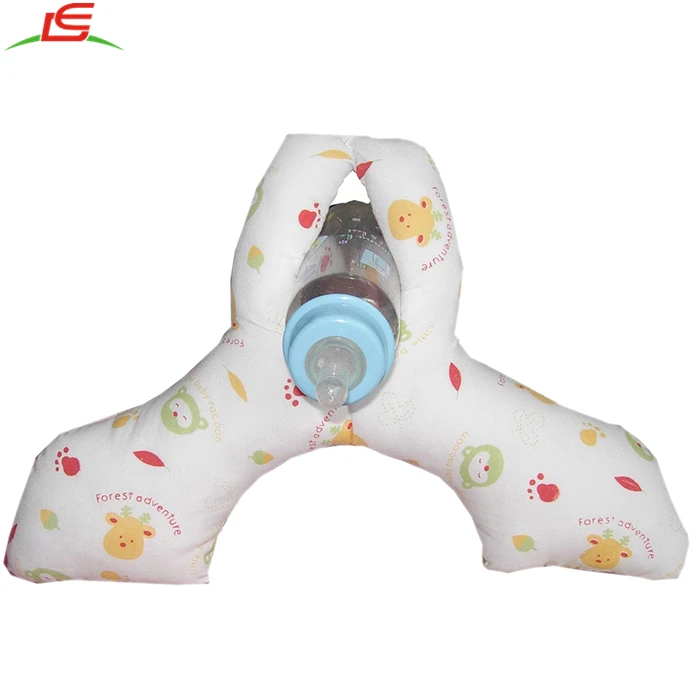 He will then proceed to "wash" his food in that same water. Get rid of the water bowl. Place a litter box in the raccoon enclosure. If you are still in the weaning to solid food process, place a small tin with kitty litter next to the feeding area. If the raccoon starts to eliminate, immediately place him in the litter. This will help speed up the process and keep him from using his food bowl as a toilet. Raccoons will share a litterbox. Unlike cats, they do not bury their feces. And they think nothing of knocking the litter box over just for the fun of it. I weigh it down with a piece of concrete under the litter.
He will then proceed to "wash" his food in that same water. Get rid of the water bowl. Place a litter box in the raccoon enclosure. If you are still in the weaning to solid food process, place a small tin with kitty litter next to the feeding area. If the raccoon starts to eliminate, immediately place him in the litter. This will help speed up the process and keep him from using his food bowl as a toilet. Raccoons will share a litterbox. Unlike cats, they do not bury their feces. And they think nothing of knocking the litter box over just for the fun of it. I weigh it down with a piece of concrete under the litter.
Raccoons are the normal host for the parasitic roundworm known as Baylisascaris procyonis. This roundworm is zoonotic, meaning it can pass from animal to animal (or human). It can cause a very rare disease called visceral larva migrans in humans and other animals. The disease is spread through the eggs contained in the feces of an infected raccoon. If ingested by an abnormal host (an animal other than a raccoon), it undergoes an aberrant migration through the body. The eggs hatch, and the larvae migrate to the brain, eyes and other organs. This condition can cause death or paralysis depending on the location in the body and number of worms. Prevention consists of never touching or inhaling raccoon feces, using rubber gloves and a mask when cleaning cages (or attics, etc.) which have been occupied by raccoons, burying or burning all feces, keeping children and pets away from raccoon cages and enclosures, and disinfecting cages and enclosures between litters. All cages and nest boxes used for housing raccoons should not be used for any other animals. They should remain strictly for raccoon use. Do frequent fecal screens on all raccoons in your possession. If positive, your wildlife vet may recommend treatment with Panacur at .1 cc per pound of body weight each week until release. Remember that raccoons may have fecal matter on their paws and bodies and take appropriate safeguards. As a precaution, all my raccoons when taken into rehab receive de-worming under our vet's supervision.
The eggs hatch, and the larvae migrate to the brain, eyes and other organs. This condition can cause death or paralysis depending on the location in the body and number of worms. Prevention consists of never touching or inhaling raccoon feces, using rubber gloves and a mask when cleaning cages (or attics, etc.) which have been occupied by raccoons, burying or burning all feces, keeping children and pets away from raccoon cages and enclosures, and disinfecting cages and enclosures between litters. All cages and nest boxes used for housing raccoons should not be used for any other animals. They should remain strictly for raccoon use. Do frequent fecal screens on all raccoons in your possession. If positive, your wildlife vet may recommend treatment with Panacur at .1 cc per pound of body weight each week until release. Remember that raccoons may have fecal matter on their paws and bodies and take appropriate safeguards. As a precaution, all my raccoons when taken into rehab receive de-worming under our vet's supervision. For more in-depth information, please see my page on Raccoon Roundworm.
For more in-depth information, please see my page on Raccoon Roundworm.
[top]
Housing young raccoons
Make sure that they are warm enough. If necessary, a heating pad wrapped in towels (if your towels have loops use a pillowcase over them) may be used at this age but be careful. There is a non-electric heating pad marketed by SnuggleSoft that you just heat in the microwave for around four minutes and, slipped under the bedding, provides up to 12 hours of safe, gentle, warmth.
Newborn to five week old raccoons can be housed in a cardboard box or, better yet, a small animal carrier. It will be warmer for them and easier for you. Raccoons will curl together into one furry lump for sleeping. If your raccoon does not have littermates, provide a suitable stuffed toy as a substitute. As raccoons grow, so must their enclosure but always keep a bed (den) area in it. Cardboard boxes sized to the raccoons work well for the bed for young raccoons - line bottom with towels for warmth. Juvenile raccoons will make short work of the cardbox box. At that age, I prefer to start using that small animal carrier as their bed. Depending upon the number of raccoons in the litter, you may need a small dog carrier. Remove the door from the carrier - (and any other removable pieces for that matter or the raccoons will do it for you) and place in in their enclosure. Clean and inspect the carrier daily. One advantage of using the carrier as their bed is that it makes it much easier when you must travel with the raccoons, either for vet visits or their final release into the wild. Since they feel secure in their "bed", car trips are a lot easier on everyone involved. Although I did have a litter once that "escaped" from the carrier while I was driving. Actually, it was a planned breakout - they couldn't push the door open but they managed to pull it in. I had to pull over to the side of the road while they had a ball exploring the car. Moral of story: to make sure they can't get the door open while you're travelling, tie it securely rather than just relying upon the built in locks.
Juvenile raccoons will make short work of the cardbox box. At that age, I prefer to start using that small animal carrier as their bed. Depending upon the number of raccoons in the litter, you may need a small dog carrier. Remove the door from the carrier - (and any other removable pieces for that matter or the raccoons will do it for you) and place in in their enclosure. Clean and inspect the carrier daily. One advantage of using the carrier as their bed is that it makes it much easier when you must travel with the raccoons, either for vet visits or their final release into the wild. Since they feel secure in their "bed", car trips are a lot easier on everyone involved. Although I did have a litter once that "escaped" from the carrier while I was driving. Actually, it was a planned breakout - they couldn't push the door open but they managed to pull it in. I had to pull over to the side of the road while they had a ball exploring the car. Moral of story: to make sure they can't get the door open while you're travelling, tie it securely rather than just relying upon the built in locks.
[top]
Housing juvenile raccoons
The type of outside enclosure you use for your raccoons will depend upon your rehabbing methods. Up to 4 raccoons can be placed in a cage measuring 24'X8'X8'. Cages measuring 6'X6'X12' long are also satisfactory. Wire should be 1"X2" welded wire. Fiberglass panels should be placed on the ends to protect them from the weather (Evans & Evans, 1985). Some rehabbers use a very large enclosure, complete with tree(s), child's wading pool, various climbing items and other toys, feeders, and wooden boxes for beds. They may have several litters together and the older ones help teach the younger ones numerous skills. Many raccoons will stay within this type of enclosure until their final release. They should be released in a area with feeders that are regularly restocked until you are sure they no longer need them. I use a smaller enclosure with just branches, toys, their food bowl, litter box and bed (animal carrier). All their other activity takes place in the woods themselves and I start taking them on daily excursions when they are about 10 weeks old.
[top]
Dealing with imprinting and other problems
While bottle feeding does make raccoons bond with you, when they are being rehabbed with littermates they do not imprint as heavily on their human surrogate mother as a single orphaned one would. As they grow, they will prefer the company of their littermates over you. If at all possible, try to never rehab a single raccoon. Contact another rehabber in your area and see if you can merge your rehabs once they have received clean bills of health for distemper and roundworm.
Physical affection should be lavished upon nursing raccoons. Once they are weaned, you need to start distancing yourself from them, to break the human bond. Also start limiting their human contact to just yourself.
As they get older they will get quite playful, which increases the chances of your being bit. Use precaution and heavy gloves and make it clear that they are not to rough house with you. Sharply say "NO" and growl or hiss at them.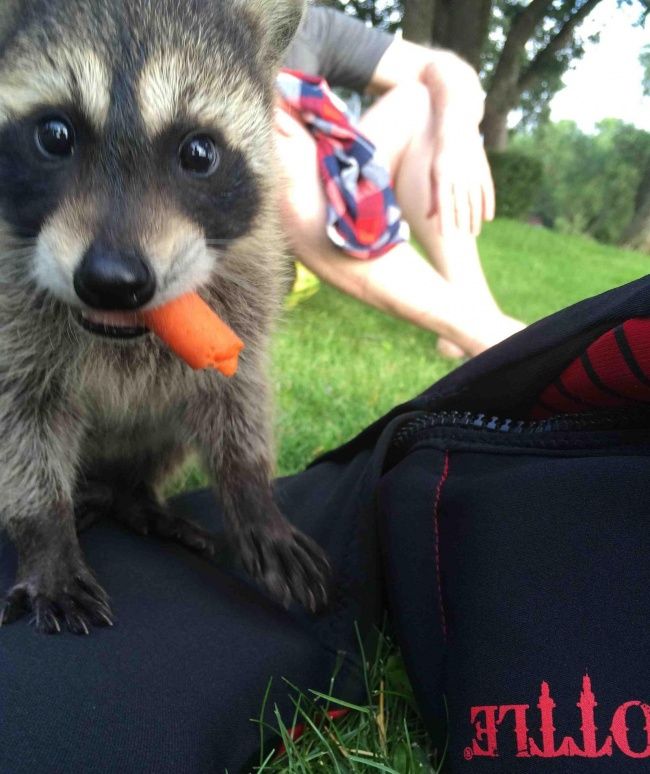 If they are by you at the time, gently shake the scuff of their neck while you do this. The scuff of the neck works well with raccoons - their moms carry them by it, shake them by it and will pin them down by it when they really tick mom off. You grab just skin and fur. They can't turn their head around enough to bite you and if you pick them up that way they usually just hang there quite docile (must be instinctive.) This should never be attempted with wild or adult raccoons but I find it quite effective while I am still their "mother".
If they are by you at the time, gently shake the scuff of their neck while you do this. The scuff of the neck works well with raccoons - their moms carry them by it, shake them by it and will pin them down by it when they really tick mom off. You grab just skin and fur. They can't turn their head around enough to bite you and if you pick them up that way they usually just hang there quite docile (must be instinctive.) This should never be attempted with wild or adult raccoons but I find it quite effective while I am still their "mother".
[top]
Preparing a raccoon for release
At about 10 weeks of age, I start taking the raccoons for daily excursions. At this age they will follow me like little ducklings but as they get older the bravest of any litter can easily lead the others quickly astray - so be prepared. A wheel barrel filled with water is not only great fun for them play in but, when stocked with minnows, teaches them how to fish. Rumaging around in the leaves on the ground can yield all sorts of things to eat.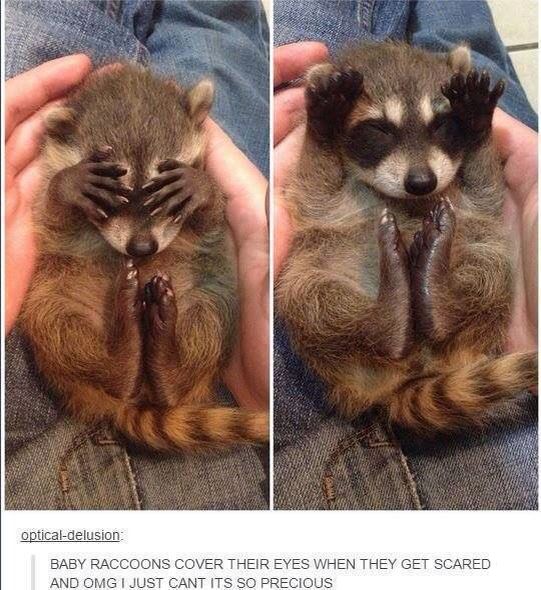
I lead them to smaller isolated trees where they can be more easily retrieved or coaxed down with a bribe. The first couple of times, they may be a little leery and you might have to help them up and down. After that, they discover all the good things about trees (food, shelter, fun) and you'll find them making a run for the trees.
Then I start to let them out by themselves, gradually building up from a few hours each day, to half a day, to overnight for a day or more at a time. Each time they visit their food bowl less and less, sustaining themselves on nature's offerings instead, and it becomes harder and harder to coax them to me. And sometimes they start to turn almost nocturnal. It is then that I make the final catch and release them into non-hunting areas in the areas where they were born. I do leave food and check back but it is more for me than for them - they do not need my help anymore, they have successfully returned to the wild.

[top]
Tips for becoming a rehabber, links and more info will be posted shortly. Check back.
Please see my other pages of raccoon facts & info and Rabies & other diseases.
Copyright 1997-2009 The Gable
All rights reserved.
See Copyright and Disclaimer notices.
How to feed a raccoon puppy | House of the Raccoon
Tiny
So, the long-awaited baby is home! What's next? How to feed a raccoon puppy ? What else is needed for him to survive and grow up healthy and cheerful? In short, the following is required: 1) Determine the approximate age of puppy and, more importantly, its development. 2) Feed correctly 3) Do massages 4) Provide a comfortable temperature and a safe place
Only puppies older than 2 weeks can be kept like this during feeding! NOTE!
Raccoon
All these moments are very important for the survival and rearing of the baby raccoon . None of them can be passed over as less significant. Let's take a look at each of these points in order and in as much detail as possible. So definition of age and development. Everything else depends on this. The age of a raccoon and its development are two different factors. In dogs and cats, most often the specific age of the puppy implies a specific development. In raccoons the situation is much more complicated. For example: Last year, one owner had two females at about the same time brought raccoon puppies . The conditions of keeping, feeding and care for both female raccoons were the same. Only the age of females and males-fathers of raccoon puppies differed. At the age of 3 weeks, the puppies of both females were about the same size, weight and behavior. But by 5 weeks, weight and behavior began to differ significantly. The babies of the first female at 5 weeks old began to open their eyes and actively crawl around the den. The second mother's children began to open their eyes only at 8 weeks.
None of them can be passed over as less significant. Let's take a look at each of these points in order and in as much detail as possible. So definition of age and development. Everything else depends on this. The age of a raccoon and its development are two different factors. In dogs and cats, most often the specific age of the puppy implies a specific development. In raccoons the situation is much more complicated. For example: Last year, one owner had two females at about the same time brought raccoon puppies . The conditions of keeping, feeding and care for both female raccoons were the same. Only the age of females and males-fathers of raccoon puppies differed. At the age of 3 weeks, the puppies of both females were about the same size, weight and behavior. But by 5 weeks, weight and behavior began to differ significantly. The babies of the first female at 5 weeks old began to open their eyes and actively crawl around the den. The second mother's children began to open their eyes only at 8 weeks. And active crawling out of the lair began at 9weeks. The babies of the first female at that time already saw perfectly well, kept well on their paws and began to try food from their mother's bowl. They were painlessly transferred to soaked dry food for small puppies under the mother at 7 weeks. The babies of the second mother, up to 12 weeks, had to be bottle-fed with a milk-banana mixture, and only by 16 weeks they began to eat solid food and firmly stood on their paws. This is the difference I have in mind when I talk about development. So, we examine our baby: 1) how confidently does he hold on to his paws, does he completely raise the body above the ground or do the paws spread and only sometimes does the baby collect them under him? Until the baby fully confidently stands on its paws, it will have to be fed from a bottle with a banana-milk mixture. Not to be confused with braiding the paws while moving! For a long time, the baby will learn to control them, especially when cornering, but he must confidently keep his body on them.
And active crawling out of the lair began at 9weeks. The babies of the first female at that time already saw perfectly well, kept well on their paws and began to try food from their mother's bowl. They were painlessly transferred to soaked dry food for small puppies under the mother at 7 weeks. The babies of the second mother, up to 12 weeks, had to be bottle-fed with a milk-banana mixture, and only by 16 weeks they began to eat solid food and firmly stood on their paws. This is the difference I have in mind when I talk about development. So, we examine our baby: 1) how confidently does he hold on to his paws, does he completely raise the body above the ground or do the paws spread and only sometimes does the baby collect them under him? Until the baby fully confidently stands on its paws, it will have to be fed from a bottle with a banana-milk mixture. Not to be confused with braiding the paws while moving! For a long time, the baby will learn to control them, especially when cornering, but he must confidently keep his body on them.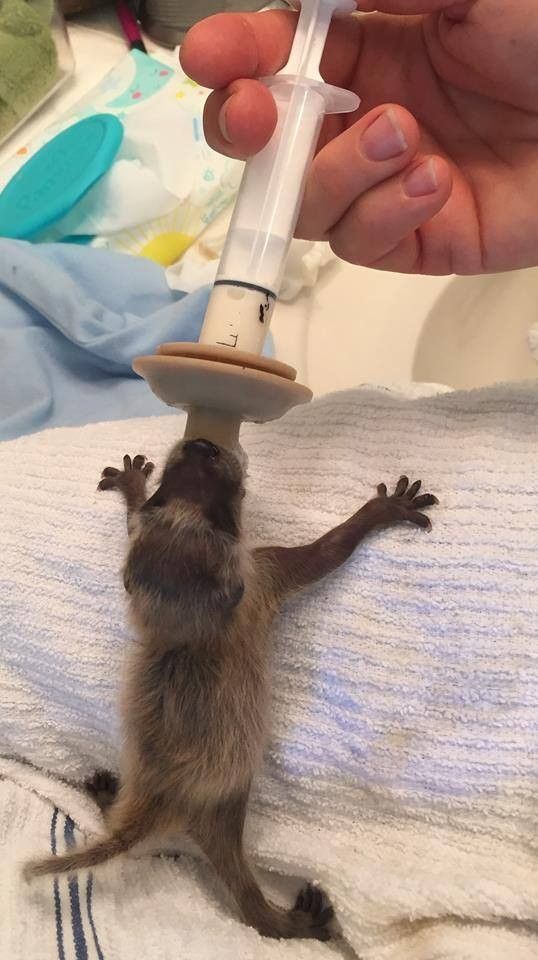 2) Eyes. Only if the baby has clean, without blue lanyards, completely open, meaningfully looking eyes, can he be fed “in an adult way”. If there is an infantile languor (blueness) on the eyes, if the gaze is wandering and inattentive, your food is in the bottle. So, we have formed two types of baby's age: for a bottle and for soaked food. And you can’t confuse them, ruin the baby! While the baby is feeding from a bottle, your obligatory worries are added: 1) Sterilization of the bottle 2) Massage of the tummy and anus until the result. 3) Temperature control
2) Eyes. Only if the baby has clean, without blue lanyards, completely open, meaningfully looking eyes, can he be fed “in an adult way”. If there is an infantile languor (blueness) on the eyes, if the gaze is wandering and inattentive, your food is in the bottle. So, we have formed two types of baby's age: for a bottle and for soaked food. And you can’t confuse them, ruin the baby! While the baby is feeding from a bottle, your obligatory worries are added: 1) Sterilization of the bottle 2) Massage of the tummy and anus until the result. 3) Temperature control
where to buy a raccoon
DO NOT hold the baby during feeding!!!!
4) Sucking reflex compensation (finger). At this age, babies are not yet able to regulate their body temperature. Easy to catch cold and overheat. This issue is best solved by placing the raccoon in a rather large cardboard box with high walls. We cover the box with terry towels. In one of the corners we put plastic one and a half liter bottles with warm water.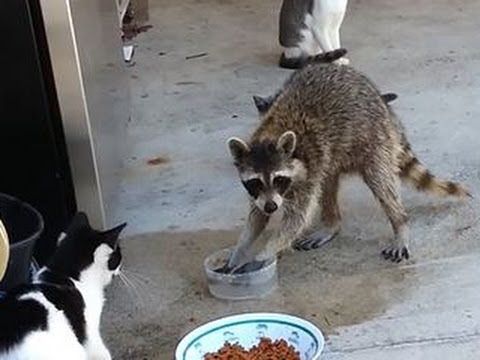 When the baby is cold, he will climb into this corner. Bottles can be replaced with heating pads. But do not forget, firstly, to change the water more often as it cools down, and secondly, make sure that the baby has somewhere to crawl if it gets hot. These recommendations do not apply to babies who do not actively crawl themselves. How to deal with them, I will tell separately. Feeding babies : So, very young babies, before opening their eyes, you can try to feed them with cat's milk replacer. NEVER FEED MILK!! This applies to all types of milk: cow's, goat's, lactose-free... There were cases of successful nursing in Russia, but there were also sad stories. Therefore, I decided to clarify this issue with foreign colleagues from the Forest Infant Rehabilitation Center in Canada. Their advice can be read here. Not every mixture is suitable - a milk replacer. In Russia, it is desirable to find one. If there are discrepancies in the articles, please clarify in the comments: now we are closely studying this issue.
When the baby is cold, he will climb into this corner. Bottles can be replaced with heating pads. But do not forget, firstly, to change the water more often as it cools down, and secondly, make sure that the baby has somewhere to crawl if it gets hot. These recommendations do not apply to babies who do not actively crawl themselves. How to deal with them, I will tell separately. Feeding babies : So, very young babies, before opening their eyes, you can try to feed them with cat's milk replacer. NEVER FEED MILK!! This applies to all types of milk: cow's, goat's, lactose-free... There were cases of successful nursing in Russia, but there were also sad stories. Therefore, I decided to clarify this issue with foreign colleagues from the Forest Infant Rehabilitation Center in Canada. Their advice can be read here. Not every mixture is suitable - a milk replacer. In Russia, it is desirable to find one. If there are discrepancies in the articles, please clarify in the comments: now we are closely studying this issue.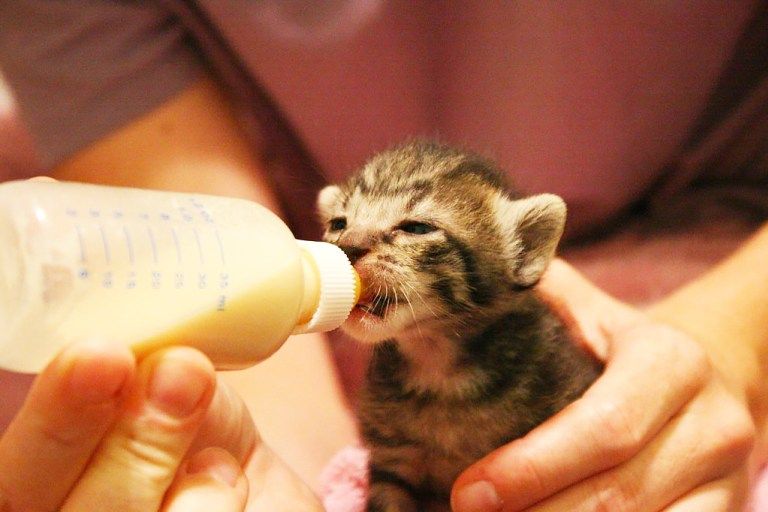
Here it is important not to overfeed the baby, but also not to starve. After feeding, the raccoon puppy should calmly sleep sweetly for 3-4 hours. If he wakes up earlier, you are underfeeding; if he sleeps further, you are overfeeding. Daily weighing is not unimportant! Weight must always increase! Let just a little, but grow. Therefore, you will definitely need electronic scales. Also during this period, massage of the tummy and perineum is especially important. Enetenok himself can neither write nor poop. Massage of the tummy is performed immediately after feeding and in the interval between feedings. The massage is performed as follows: with soft circular movements clockwise we stroke the tummy, slightly pressing. After two or three minutes of massage, lift the ponytail almost perpendicular to the back and slap the anus with gentle movements, lifting the ass with an upward movement. In case of constipation, first lubricate the ass with plenty of Vaseline. Next, we put the raccoon on the palm, so that the index finger is on the raccoon's pussy, and pat it until urination.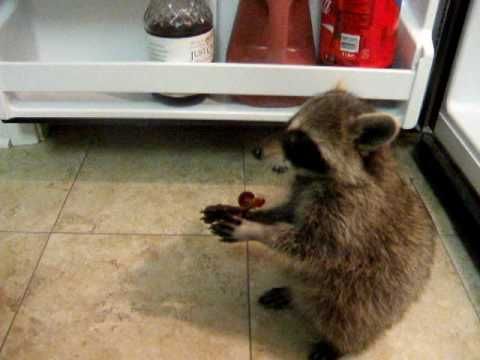 Ideally, the chair should be after each feeding. And if this does not happen, we repeat the massage every 40-50 minutes until the result. The main thing is that the tummy is soft and painless. In case something worries you, read "first aid for a baby: tummy hurts." If the baby drinks 40 ml of milk, eagerly, without releasing the bottle, but sleeps for only an hour and wakes up again, there is a reason to increase the nutritional value of milk. In each feeding, we begin to add a slice of banana to milk, we start with a piece of banana 1 cm thick. The next feeding is already 3 cm and if diarrhea does not appear, in the next feeding we already make a mixture of half a banana and 100 ml of milk. If the baby is weakened, leave the banana share small and add 1 tablespoon of rice water. Banana + milk - the main mixture for feeding a baby raccoon of the first period of development. When loose stools appear, a spoonful of rice broth or a spoonful of oak bark decoction is added to the mixture. If mucus appears in the stool, an admixture of blood, or it has acquired a green color or a fetid odor, these are good reasons to see a doctor.
Ideally, the chair should be after each feeding. And if this does not happen, we repeat the massage every 40-50 minutes until the result. The main thing is that the tummy is soft and painless. In case something worries you, read "first aid for a baby: tummy hurts." If the baby drinks 40 ml of milk, eagerly, without releasing the bottle, but sleeps for only an hour and wakes up again, there is a reason to increase the nutritional value of milk. In each feeding, we begin to add a slice of banana to milk, we start with a piece of banana 1 cm thick. The next feeding is already 3 cm and if diarrhea does not appear, in the next feeding we already make a mixture of half a banana and 100 ml of milk. If the baby is weakened, leave the banana share small and add 1 tablespoon of rice water. Banana + milk - the main mixture for feeding a baby raccoon of the first period of development. When loose stools appear, a spoonful of rice broth or a spoonful of oak bark decoction is added to the mixture. If mucus appears in the stool, an admixture of blood, or it has acquired a green color or a fetid odor, these are good reasons to see a doctor.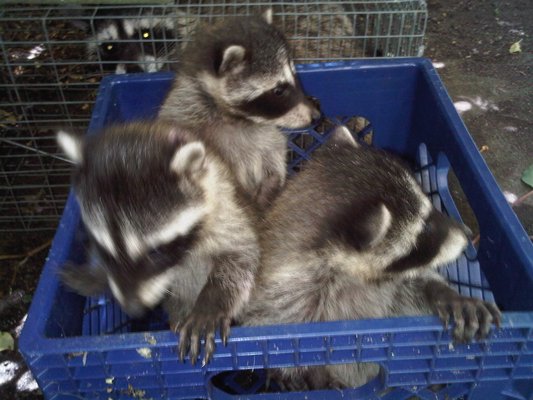 The ways of feeding the baby of the first period of development are varied and are selected from the preferences of the baby. Someone successfully learns to suck a nipple on a bottle, someone can be fed only from a syringe without a needle and kutya, someone begins to lap from a saucer, getting into it with all four paws. In Canada, feeding through a wheat straw or a cocktail tube directly from the owner's mouth is popular. Raccoons are stubborn and stubborn. And that's how they are born. And no hunger will make a youngster suck a pacifier if he doesn't like it. The first attempts in any case will take place with a fight and squeals. But if you are attentive and patient, you will quickly feel for yourself exactly how, in what way your baby agrees to eat. I wish you success.
The ways of feeding the baby of the first period of development are varied and are selected from the preferences of the baby. Someone successfully learns to suck a nipple on a bottle, someone can be fed only from a syringe without a needle and kutya, someone begins to lap from a saucer, getting into it with all four paws. In Canada, feeding through a wheat straw or a cocktail tube directly from the owner's mouth is popular. Raccoons are stubborn and stubborn. And that's how they are born. And no hunger will make a youngster suck a pacifier if he doesn't like it. The first attempts in any case will take place with a fight and squeals. But if you are attentive and patient, you will quickly feel for yourself exactly how, in what way your baby agrees to eat. I wish you success.
feeding raccoon puppies
| Age (weeks) | Feeding formula | Important | Special care |
| Birth to 1 week 60-140 grams Eyes and ears closed muzzle mask and tail rings barely visible scanty fluff of fur on the back and sides, no fur on the belly
| Serving 3 - 7 ml. nutrition (this is approximately 5% of body weight) 7-8 times a day every 2.5 - 3 hours, including night feedings. An example of a feeding schedule for 8 times a day: 7:00,9:30, at 12 :00, 14:30, 17:00, 19:30, 22:00, plus once during the night. nutrition (this is approximately 5% of body weight) 7-8 times a day every 2.5 - 3 hours, including night feedings. An example of a feeding schedule for 8 times a day: 7:00,9:30, at 12 :00, 14:30, 17:00, 19:30, 22:00, plus once during the night. Example of a feeding schedule for 7 times a day: 7:00, 10:00, 13:00, 16:00, 19:00, 22:00, plus one during the night. Feeding formula should be warmer than body temperature as it cools quickly as it passes through the nipple or feeding syringe, so keep the feeding bottle in a larger cup of warm water while feeding. | Keep baby warm in a pet carrier or small closed box with breathing holes. Protect them from drafts, and create a cozy nest with several layers of soft fabric. Change bedding twice a day, and wash them without using rinse aid because the smell is bad for babies' respiratory system. Provide outside warmth by putting a heating pad or a bottle of warm water wrapped in a soft cloth. Make sure it doesn't leak and isn't too hot for the baby to cuddle up with. Change before next feeding or when cool. Change before next feeding or when cool. | Keep baby warm at all feeding times by wrapping in a warm cloth, cage or box at all times with a heating pad or hot water bottle. Feed him in a quiet, warm environment with no distractions. Try to provide extra sucking time by wearing latex gloves over light cotton gloves and letting them suck your fingers for 10 or 15 minutes after each feed. Stimulate him at every feed by gently stroking the genital area with a wet finger or Q-tip or soft damp cloth until he has finished urinating and/or defecation. Thoroughly wash face, neck and chin after each feeding. After the baby has digested the food, the stool should be formed and golden brown. Maintain proper hygiene, as raccoon feces can contain parasites. |
| 2 weeks190-225 grams slightly pubescent no belly fur Eyes and ears closed | Serving 9.5 - 11.3 ml nutrition (that's about 5% of body weight) 6 times a day every 3 hours Example of a feeding schedule for 6 times a day: 7:00, 10:00, 13:00, 16:00, 19:00, 22:0 |
Same as |
Same as |
3 weeks 320-400 gr. full fur Eyes open at about 3 weeks (18 to 24 days of age)
| Serving 16 - 20 ml nutrition (that's about 5% of body weight) 6 times a day every 3 hours | Same as | The same Since babies become more inquisitive after opening their eyes, it is important to continue feeding them in a quiet room without any distractions. Babies can already suck from a bottle on their own. If you have several babies, you can secure several bottles on a wooden base with rubber rings. |
| 4 weeks450-550 grams
| Serving 22.5 - 27.5 ml nutrition (5% of body weight) or Serving 31.5 - 38.5 ml (7% of body weight) 5 times a day every 3.5 hours Example of a feeding schedule for 5 times a day: 7:00, 10:30, 14:00, 17:30, 21:00 | Same as | Same as |
| 5 weeks600-700 grams | Serving 30-35 ml nutrition (5% of body weight) OR Serving 42 - 49 ml (7% of body weight) 4 times a day every 4 hours Example of a feeding schedule for 4 times a day: 7:00, 11:00, 15:00, 19:00 | Same as | After a week or two of babies have opened their eyes, they can urinate on their own, you can start to teach them to go to the toilet on paper towels.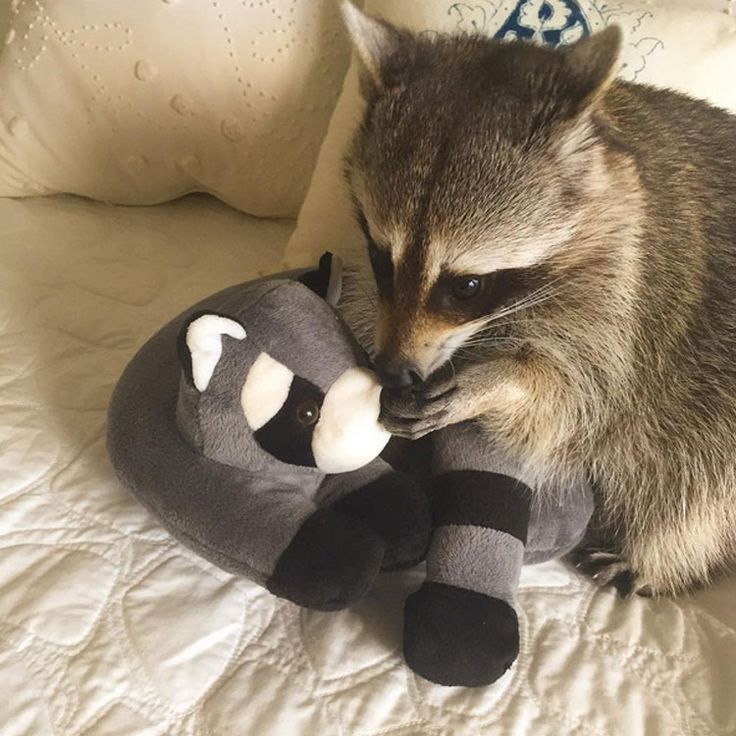 You can encourage them to urinate so they know where to go. Constantly monitor the cleanliness in the cage, change paper towels in a timely manner. You can encourage them to urinate so they know where to go. Constantly monitor the cleanliness in the cage, change paper towels in a timely manner. |
| 6 weeks750-820 grams | Serving 37.5 - 41ml nutrition (5% of body weight) OR Serving 52.3 - 55.4 ml (7% of body weight) 4 times a day every 4 hours Example of a feeding schedule for 4 times a day: 7:00, 11:00, 15:00, 19:00 Solid foods, good quality puppy food and cut fruit (grapes and bananas are preferred) may be introduced. Soak puppy food with nutrition first or mix banana puree with nutrition. Heat in the microwave until the granules are completely dissolved.
| Provide a source of clean drinking water, wash a cup of water several times a day and change the water. | You can use sand or kitten litter for potty training. The cage and tray should be cleaned and washed frequently, and the bedding should be changed daily. |
| 7 weeks900-1000 grams | Serving 45 - 5 0ml nutrition (5% of body weight) OR Portion 63 - 70 ml (7% of body weight) 4 times a day every 4 hours Example of a feeding schedule for 4 times a day: 7:00, 11:00, 15:00, 19:00 After they eat puppy food, stop soaking it and increase the amount of solid food. | Same as | Same as |
| 8 - 10 weeks 1000-1450 g | Serving 50 - 72.5ml nutrition (5% of body weight) OR Serving up to 80 ml per feeding 3 times a day every 5 hours Example of a feeding schedule for 3 times a day: 8:00, 13:00, 18:00 | Same as | Weaning Note: Do not increase feed volume above 80 ml, feed more solid food, and if the raccoons are not fed, they will be forced to eat solid food. |
| 10 - 16 weeks Raccoons born in the spring (March - May) should weigh about 6-7 kg by August-September at 16-18 weeks. | Feeding puppy food (about 2/3 of the diet) and fresh fruits and vegetables (about 1/3 of the diet). Adult dog food does not meet all the needs of a growing animal. | In the cage, make hammocks from hard fabric and ropes, various climbing frames, hang swings from tires. |
You can read more about keeping raccoons at home in the book "Poloskun Raccoon" https://ridero.ru/books/enot-poloskun/
What do raccoons eat in a domestic or wild environment, what to feed a raccoon
Content of the article:
- 1 Feeding infants
- 2 What do adult raccoons eat?
- 2.
 1 Dependence of appetite on the season of the year
1 Dependence of appetite on the season of the year - 2.1.1 What should be done in parallel with feeding?
- 2.2 A bit about wild raccoons
- 2.
The raccoon family belongs to the genus of mammalian predators. These animals gravitate towards hunting and forceful conflict resolution. In order to adequately join the food chain of the Earth's biosphere, nature endowed raccoons with a "bad" character, sharp claws and fangs. Having acquired a cute and charming rogue in a mask, a lot of questions arise, the first of which is how to feed a domestic raccoon. I propose to talk about this topic, and also touch on the question of what you need to know about raccoons, in general.
Feeding babies
The sooner you start accustoming a raccoon to your company, the more affectionate and kind this slicker will be when he becomes an adult. Of course, in everything you need to know the measure. For example, bailing a recently born baby, there is almost a 100% chance that the baby will die. There is a raccoon, there is no raccoon.
There is a raccoon, there is no raccoon.
If the owner of the raccoon is experienced and knows how to feed the raccoon at home and how to care for him, then you can try to take a baby 1 month old. Caring for such small raccoons is fraught with many difficulties. Next to the crumbs you need to be inseparable, he wakes up every few hours and requires feeding and care.
The best option for a little raccoon is a 1.5-month-old rogue. His body is already considered to be more or less strong and he is able to master the man-made food for the raccoon.
What do little raccoons eat? - Milk mixtures. Food is poured into a baby bottle with a nipple (sold in any pharmacy). If a monthly raccoon is nursed, then it is better to feed the baby with an ordinary pipette.
Cow or goat milk is used as milk mixtures. The product is diluted with a small amount of warm water. You can sweeten the mixture with sugar. In addition, high-quality condensed milk (condensed milk must be diluted) or dairy products for feeding cats can be used.
Material on the topic: How many raccoons are born from one female?
From the age of 1.5 months, the baby raccoon begins to taste solid food. Grated banana, cottage cheese and quail egg are added to the milk mixture.
At the age of 2.5 months, a little raccoon can already eat from a bowl. From the age of 3 months, he himself begins to understand what domestic raccoons eat, what is good for him and what is not.
What do adult raccoons eat?
Adult raccoons are omnivores. Having reached puberty, the raccoon begins to show its true essence, the essence of a carnivorous hunter.
It is obligatory and absolutely necessary to include in the diet of a raccoon:
- Poultry
- Meat (beef/pork)
- Fish (any other than red fillets)
Food of animal origin is of particular interest to raccoons in spring and summer. They can eat rarely if the food is rich in fats, proteins and carbohydrates.
They can eat rarely if the food is rich in fats, proteins and carbohydrates.
What else to feed a raccoon besides meat products? – In addition to food of animal origin, raccoons lean on berries, fruits, vegetables and nuts:
- Apples/pears/plums/apricots
- Strawberry/gooseberry/mulberry/grape
- Pumpkin/zucchini/melons
- Hazelnut/almond/walnut/pistachio
- Various cereals (buckwheat, rice, etc.)
If you have a raccoon gargle, what to feed this slicker questions should not arise.
In order not to spend money on fruits during the winter, you can prepare dried fruits according to the season. Raccoons love prunes, dried apricots and raisins. That is, you can get a dryer for fruit and prepare the necessary amount of feed during the harvest. Dried fruits are vacuumized and transferred to the refrigerator for storage. If you are faced with the question of how to feed a domestic raccoon, you can prepare 15-20 (kg) dried fruits without straining during the period of summer and autumn, which will be enough for raccoons for the whole winter and spring.
Material on the topic: A raccoon as a totem animal
Dependence of appetite on the season of the year
Taste preferences of raccoons directly depend on the period of the year. As practice shows, during the warm period of the year (especially in summer), raccoons have a weak appetite. Many raccoons seriously lose weight. If you notice that the pet is very thin, then do not be afraid. Appetite comes to raccoons from early autumn. From this period, raccoons rapidly gain weight. It is from autumn that you need to seriously think about how to feed a raccoon at home.
As a rule, in the autumn raccoons lean on vegetables and nuts, alternating a vegetarian meal with food of animal origin. For example, wild raccoons like to seriously trim the rodent population. By the way, check out the article how, when and how much raccoons eat mice .
By winter, the raccoon becomes well-fed. Its rounded forms begin to shine and shimmer in the Sun with shining fur.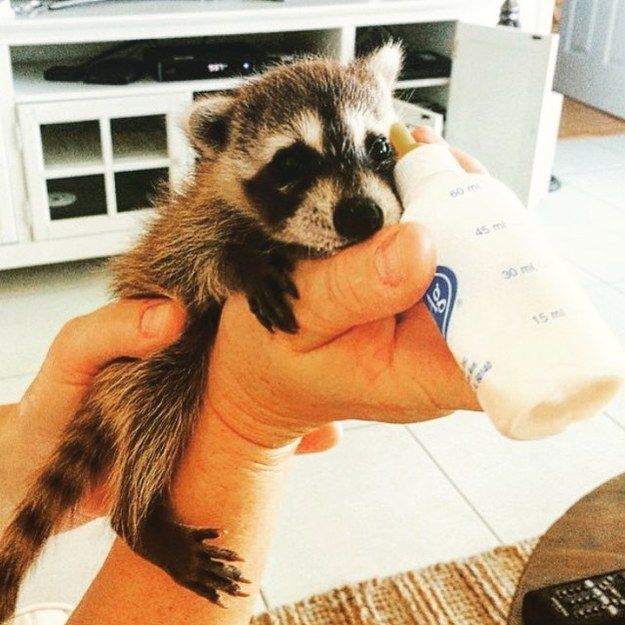
What should be done in parallel with feeding?
Little raccoons need to massage the belly area. There are cases when raccoons are not able to go to the potty. The raccoon's tummy can swell, which is why many crumbs die. That is, massage stimulates the passage of undigested waste through the intestines.
A bit about wild raccoons
The life of savages is fundamentally different from that of domesticated raccoons. Wild raccoons are real opportunists. They are ready to crush, break and kill anyone who can be chewed by their fangs. Feed includes:
- Birds
- Snakes
- Turtles
- Insects
- Fish
- Rodents
Raccoons are accused of the complete extermination of the population of many species of insects. Raccoons are good at cleaning the area from poisonous spiders and snakes. That is why raccoons are artificially introduced in many parts of the world.
Related material: Raccoon habitat
What else do you need to know about raccoons? - Savages go hunting at night, and during the day they sleep off.

 Provide toys - natural ones are best - acorns, cones, small twigs, bark, limestone chunks, shells, rocks/pebbles, flower seeds, etc., but hard dog toys, cat toys, children's toys are fine too.
Provide toys - natural ones are best - acorns, cones, small twigs, bark, limestone chunks, shells, rocks/pebbles, flower seeds, etc., but hard dog toys, cat toys, children's toys are fine too. 